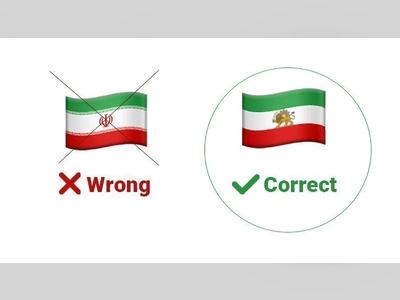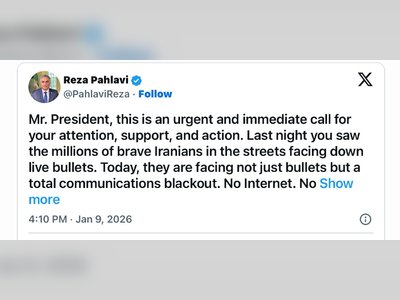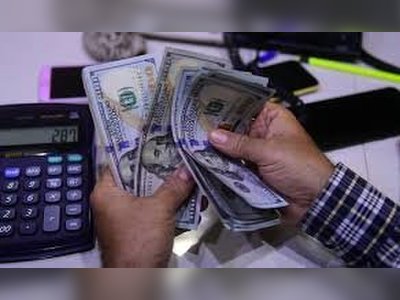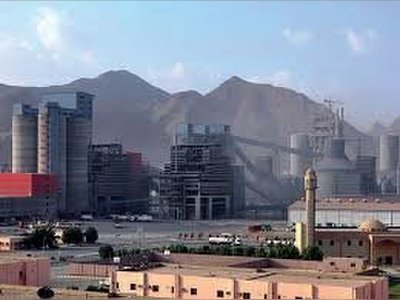
Gold Prices Rise 14% Since the Start of 2024 Despite Diminishing Rate Cuts Expectations
Gold prices surged last Friday, reinforced by U.S. producer price data that came in below expectations, fueling hopes for a potential cut in U.S. interest rates this year.
Concurrent geopolitical concerns further enhanced the metal's appeal.
The precious metal reached a record high of $2395.29 per ounce, with this week's gains marking a 2.6% increase. Bullion prices hit their highest level ever for the eighth consecutive session on Tuesday. The settlement price in the U.S. futures contracts for gold rose by 1% to $2372.7.
A report by the Labor Department indicated that the producer price index (PPI) increased by 0.2% on a monthly basis in March, compared to the 0.3% rise economists had anticipated. According to David Meger, Director of Metals Trading at High Ridge Futures, "The PPI data came in slightly cooler than anticipated, keeping alive the hopes for possible interest rate cuts by the end of the year—which, as a result, sent gold prices up." Meger added, "Central bank purchases and geopolitical uncertainty continue to be the pillars of support for the gold market."
Traders are betting on the possibility that the Federal Reserve might initiate interest rate cuts as early as its late July meeting, following inflation data. Traditionally, gold is seen as a hedge against inflation, but higher interest rates diminish the attractiveness of holding gold, which yields no return.
Meanwhile, data on Wednesday showed that U.S. consumer prices rose more than expected in March. Boston Federal Reserve President, Susan Collins, mentioned on Thursday that the latest data suggests it might take longer than previously thought to gain greater confidence in the downward path of inflation before starting to ease policy.
According to Giovanni Staunovo, an analyst at UBS, "For the next move in prices, we still need to see a resurgence in demand for exchange-traded gold funds, which requires a signal from the Federal Reserve indicating a rate cut."
Silver also rose in spot transactions by 1% to $28.24 per ounce. Platinum climbed 2.1% to $980.15, while palladium lost 0.9% falling to $1041.62.
Elsewhere, diversified mining company Sibanye Stillwater stated it might cut over 4,000 jobs as it restructures its gold operations in South Africa, having already eliminated around 2,000 roles in its platinum group metals operations.
Gold continues to shine among investors even as confidence wanes that central banks will make significant rate cuts this year. Hovering near record levels signifies that gold has now increased by more than 14% since the start of 2024.
Ole Hansen, Head of Commodity Strategy at Saxo Bank, commented, "The strong underlying momentum with buying on dips remains the prevailing strategy among traders." He noted that "Geopolitical risks related to Russia, Ukraine, and the Middle East still play a supportive role, and the focus shifts from the negative impact of lower interest rate cut expectations to high and stable inflation."
Gold is traditionally viewed as a safe haven during turbulent times and as a hedge against inflation. The precious metal has seen a record surge since mid-February, buoyed by U.S. interest rate cut prospects and geopolitical tensions, as well as economic issues in China.
Futures traders have reduced their bets on the extent of Federal Reserve's interest rate cuts this year to the lowest level since October. Traders now anticipate less than three quarter-point cuts in U.S. interest rates this year, down from as many as six cuts expected in January.
Despite the general principle that higher interest rates limit the attractiveness of non-yielding gold, the precious metal has so far defied these factors. Some central banks have added to their gold reserves, with the Chinese Central Bank purchasing gold for its reserves for the 17th consecutive month in March.
Christina Hooper, Chief Global Market Strategist at Invesco, suggested that concerns over U.S. debt might drive some towards the precious metal. She highlighted worries regarding the sustainability of the U.S. fiscal situation in the long term, which seems to have prompted some central banks to increase their gold holdings at the expense of U.S. Treasury bonds.
Analysts at Bank of America, in a note, projected that gold could rise to $3000 per ounce by 2025, supported by strong demand from central banks and the expectation of investors returning to the market once the Federal Reserve begins cutting interest rates.
Michael Widmer, a commodities strategist at the bank, emphasized gold's resilience amid global central banks' monetary policy tightening. "Gold prices have been remarkably resilient in recent months, despite monetary policy tightening by central banks worldwide," he stated.
The Chinese Central Bank, in particular, played a significant role in supporting the gold market, accumulating over 200 tons of the yellow metal in 2023 alone. This high level of purchasing is also based on increased retail sector activity in China, where jewelry sales and non-monetary gold imports "reached record levels earlier this year."
Widmer added, "If the Federal Reserve eventually starts cutting interest rates, investors should return to the market, also compensating for any potential decline in Chinese investment demand as sentiments there improve and the economy accelerates." He had previously estimated a price target of $2400 per ounce if the Federal Reserve reduced interest rates in the first quarter of 2024; "We are now raising that and see gold climbing to $3000 per ounce by 2025," Widmer elaborated.
In response to these developments, the equity research team at Bank of America also upgraded its rating for Alamos Gold from neutral to buy. The optimism extends beyond precious metals alone, as Bank of America also sounded the alarm about a potential copper supply crisis.
Widmer remarked, "Raw materials are increasingly dancing to their own tune," with copper seen at the "center of the energy transition." The bank forecasts significant increases in copper prices, driven by a variety of factors including green technology investments, weak inventories, and global economic recovery.
Copper prices are expected to average $10750 per ton in 2025, rising to $12000 per ton in 2026. Widmer points to the critical situation in copper mine supplies, which has started to seriously affect refined production. "The widely discussed shortage of copper mine projects is finally starting to impact," he explained.
Although advancements in electric vehicle technology have reduced the amount of copper required in new models - Tesla's latest 48-volt system reportedly uses 75% less copper - demand from other sectors remains high. Copper is crucial for applications such as data center cables and the electricity grid, covering both power generation and transmission. Following these optimistic forecasts, the bank also upgraded its ratings for copper producers from neutral to buy, indicating the strong performance expected in the copper market.
In the global markets, Asian stocks struggled to find direction on Friday as investors sought clues on the timing of Federal Reserve interest rate cuts amid uncertain inflation expectations in the United States. However, geopolitical and policy uncertainties helped gold reach a new peak.
Gold rose, supported by safe-haven demand amid ongoing tensions in the Middle East and after a moderate reading of producer price inflation kept hopes alive for Federal Reserve easing this year.
Conversely, U.S. Treasury yields remained near their five-month highs following hotter than expected consumer price data mid-week, which forced a scaling back of rate cut bets. The dollar hovered near its five-month high after gaining over 1% this week against a basket of major currencies. Markets now anticipate fewer than three-quarter-point rate cuts from the Federal Reserve this year, fewer than the three cuts Fed officials projected last month following Wednesday's consumer price index surprise.
Federal Reserve officials said on Thursday there was no pressing need to ease, with Boston Fed President Susan Collins stating that the economy's strength and irregular inflation decline run counter to a near-term push for rate cuts. However, IG financial analyst Tony Sycamore remains optimistic about the outlook for stocks. "If U.S. economic growth remains resilient, inflation stays under control, and bond market selling doesn't accelerate, the backdrop for U.S. stock markets remains supportive even without Federal Reserve rate cuts," he commented.
Japan was the only true bright spot in the Asia-Pacific region on Friday, with the Nikkei 225 index rising by 0.23%. Technology stocks led the way, inspired by their American counterparts' overnight surge. The index's gains could have been greater were it not for a sharp drop in shares of heavyweight Fast Retailing, the owner of the Uniqlo chain, following disappointing earnings.
Elsewhere, markets mostly suffered losses. South Korea's KOSPI index fell by 0.9%, and Singapore's Straits Times index dropped by 0.26%, with central banks in both countries opting to leave policy unchanged on Friday.
The worst losses were in Hong Kong, where the Hang Seng index fell by 1.65% as real estate stocks were hit hard. Mainland China's leading stocks were down by 0.2%. The broader MSCI index for Asia-Pacific stocks outside Japan fell by 0.67%, paring back its gains for the week to only 0.18%.
European Stoxx 50 futures rose by 0.7%. U.S. stock futures remained flat, after the S&P 500 index climbed by 0.7% and the technology-focused Nasdaq index rose by 1.7%.
The U.S. corporate earnings season began on Friday with major banks including J.P. Morgan Chase and Wells Fargo. Kyle Rodda, Senior Financial Markets Analyst at Capital.com, said, "Ultimately, I think investors are craving strong U.S. earnings, with pricing in interest rate cuts being the only factor that can provide a fundamental justification for buying stocks at these levels."
U.S. long-term Treasury yields were 4.5665% in Asia trade, staying close to the overnight high of 4.5930%, last seen on November 14. The rise in yields supported the dollar, which soared to a 34-year high of 153.32 yen on Thursday. It last traded at 153.13 yen, remaining weak despite new intervention warnings from Japan's finance minister.
The dollar index, which measures the currency against the yen, euro, and four other currencies, traded at 105.38, after reaching its highest level since November 14 at 105.53 overnight. It has jumped by 1.06% this week.
The euro bought $1.07125 after falling to nearly a two-month low of $1.0699 on Thursday when the European Central Bank indicated that interest rate cuts may come soon.
The precious metal reached a record high of $2395.29 per ounce, with this week's gains marking a 2.6% increase. Bullion prices hit their highest level ever for the eighth consecutive session on Tuesday. The settlement price in the U.S. futures contracts for gold rose by 1% to $2372.7.
A report by the Labor Department indicated that the producer price index (PPI) increased by 0.2% on a monthly basis in March, compared to the 0.3% rise economists had anticipated. According to David Meger, Director of Metals Trading at High Ridge Futures, "The PPI data came in slightly cooler than anticipated, keeping alive the hopes for possible interest rate cuts by the end of the year—which, as a result, sent gold prices up." Meger added, "Central bank purchases and geopolitical uncertainty continue to be the pillars of support for the gold market."
Traders are betting on the possibility that the Federal Reserve might initiate interest rate cuts as early as its late July meeting, following inflation data. Traditionally, gold is seen as a hedge against inflation, but higher interest rates diminish the attractiveness of holding gold, which yields no return.
Meanwhile, data on Wednesday showed that U.S. consumer prices rose more than expected in March. Boston Federal Reserve President, Susan Collins, mentioned on Thursday that the latest data suggests it might take longer than previously thought to gain greater confidence in the downward path of inflation before starting to ease policy.
According to Giovanni Staunovo, an analyst at UBS, "For the next move in prices, we still need to see a resurgence in demand for exchange-traded gold funds, which requires a signal from the Federal Reserve indicating a rate cut."
Silver also rose in spot transactions by 1% to $28.24 per ounce. Platinum climbed 2.1% to $980.15, while palladium lost 0.9% falling to $1041.62.
Elsewhere, diversified mining company Sibanye Stillwater stated it might cut over 4,000 jobs as it restructures its gold operations in South Africa, having already eliminated around 2,000 roles in its platinum group metals operations.
Gold continues to shine among investors even as confidence wanes that central banks will make significant rate cuts this year. Hovering near record levels signifies that gold has now increased by more than 14% since the start of 2024.
Ole Hansen, Head of Commodity Strategy at Saxo Bank, commented, "The strong underlying momentum with buying on dips remains the prevailing strategy among traders." He noted that "Geopolitical risks related to Russia, Ukraine, and the Middle East still play a supportive role, and the focus shifts from the negative impact of lower interest rate cut expectations to high and stable inflation."
Gold is traditionally viewed as a safe haven during turbulent times and as a hedge against inflation. The precious metal has seen a record surge since mid-February, buoyed by U.S. interest rate cut prospects and geopolitical tensions, as well as economic issues in China.
Futures traders have reduced their bets on the extent of Federal Reserve's interest rate cuts this year to the lowest level since October. Traders now anticipate less than three quarter-point cuts in U.S. interest rates this year, down from as many as six cuts expected in January.
Despite the general principle that higher interest rates limit the attractiveness of non-yielding gold, the precious metal has so far defied these factors. Some central banks have added to their gold reserves, with the Chinese Central Bank purchasing gold for its reserves for the 17th consecutive month in March.
Christina Hooper, Chief Global Market Strategist at Invesco, suggested that concerns over U.S. debt might drive some towards the precious metal. She highlighted worries regarding the sustainability of the U.S. fiscal situation in the long term, which seems to have prompted some central banks to increase their gold holdings at the expense of U.S. Treasury bonds.
Analysts at Bank of America, in a note, projected that gold could rise to $3000 per ounce by 2025, supported by strong demand from central banks and the expectation of investors returning to the market once the Federal Reserve begins cutting interest rates.
Michael Widmer, a commodities strategist at the bank, emphasized gold's resilience amid global central banks' monetary policy tightening. "Gold prices have been remarkably resilient in recent months, despite monetary policy tightening by central banks worldwide," he stated.
The Chinese Central Bank, in particular, played a significant role in supporting the gold market, accumulating over 200 tons of the yellow metal in 2023 alone. This high level of purchasing is also based on increased retail sector activity in China, where jewelry sales and non-monetary gold imports "reached record levels earlier this year."
Widmer added, "If the Federal Reserve eventually starts cutting interest rates, investors should return to the market, also compensating for any potential decline in Chinese investment demand as sentiments there improve and the economy accelerates." He had previously estimated a price target of $2400 per ounce if the Federal Reserve reduced interest rates in the first quarter of 2024; "We are now raising that and see gold climbing to $3000 per ounce by 2025," Widmer elaborated.
In response to these developments, the equity research team at Bank of America also upgraded its rating for Alamos Gold from neutral to buy. The optimism extends beyond precious metals alone, as Bank of America also sounded the alarm about a potential copper supply crisis.
Widmer remarked, "Raw materials are increasingly dancing to their own tune," with copper seen at the "center of the energy transition." The bank forecasts significant increases in copper prices, driven by a variety of factors including green technology investments, weak inventories, and global economic recovery.
Copper prices are expected to average $10750 per ton in 2025, rising to $12000 per ton in 2026. Widmer points to the critical situation in copper mine supplies, which has started to seriously affect refined production. "The widely discussed shortage of copper mine projects is finally starting to impact," he explained.
Although advancements in electric vehicle technology have reduced the amount of copper required in new models - Tesla's latest 48-volt system reportedly uses 75% less copper - demand from other sectors remains high. Copper is crucial for applications such as data center cables and the electricity grid, covering both power generation and transmission. Following these optimistic forecasts, the bank also upgraded its ratings for copper producers from neutral to buy, indicating the strong performance expected in the copper market.
In the global markets, Asian stocks struggled to find direction on Friday as investors sought clues on the timing of Federal Reserve interest rate cuts amid uncertain inflation expectations in the United States. However, geopolitical and policy uncertainties helped gold reach a new peak.
Gold rose, supported by safe-haven demand amid ongoing tensions in the Middle East and after a moderate reading of producer price inflation kept hopes alive for Federal Reserve easing this year.
Conversely, U.S. Treasury yields remained near their five-month highs following hotter than expected consumer price data mid-week, which forced a scaling back of rate cut bets. The dollar hovered near its five-month high after gaining over 1% this week against a basket of major currencies. Markets now anticipate fewer than three-quarter-point rate cuts from the Federal Reserve this year, fewer than the three cuts Fed officials projected last month following Wednesday's consumer price index surprise.
Federal Reserve officials said on Thursday there was no pressing need to ease, with Boston Fed President Susan Collins stating that the economy's strength and irregular inflation decline run counter to a near-term push for rate cuts. However, IG financial analyst Tony Sycamore remains optimistic about the outlook for stocks. "If U.S. economic growth remains resilient, inflation stays under control, and bond market selling doesn't accelerate, the backdrop for U.S. stock markets remains supportive even without Federal Reserve rate cuts," he commented.
Japan was the only true bright spot in the Asia-Pacific region on Friday, with the Nikkei 225 index rising by 0.23%. Technology stocks led the way, inspired by their American counterparts' overnight surge. The index's gains could have been greater were it not for a sharp drop in shares of heavyweight Fast Retailing, the owner of the Uniqlo chain, following disappointing earnings.
Elsewhere, markets mostly suffered losses. South Korea's KOSPI index fell by 0.9%, and Singapore's Straits Times index dropped by 0.26%, with central banks in both countries opting to leave policy unchanged on Friday.
The worst losses were in Hong Kong, where the Hang Seng index fell by 1.65% as real estate stocks were hit hard. Mainland China's leading stocks were down by 0.2%. The broader MSCI index for Asia-Pacific stocks outside Japan fell by 0.67%, paring back its gains for the week to only 0.18%.
European Stoxx 50 futures rose by 0.7%. U.S. stock futures remained flat, after the S&P 500 index climbed by 0.7% and the technology-focused Nasdaq index rose by 1.7%.
The U.S. corporate earnings season began on Friday with major banks including J.P. Morgan Chase and Wells Fargo. Kyle Rodda, Senior Financial Markets Analyst at Capital.com, said, "Ultimately, I think investors are craving strong U.S. earnings, with pricing in interest rate cuts being the only factor that can provide a fundamental justification for buying stocks at these levels."
U.S. long-term Treasury yields were 4.5665% in Asia trade, staying close to the overnight high of 4.5930%, last seen on November 14. The rise in yields supported the dollar, which soared to a 34-year high of 153.32 yen on Thursday. It last traded at 153.13 yen, remaining weak despite new intervention warnings from Japan's finance minister.
The dollar index, which measures the currency against the yen, euro, and four other currencies, traded at 105.38, after reaching its highest level since November 14 at 105.53 overnight. It has jumped by 1.06% this week.
The euro bought $1.07125 after falling to nearly a two-month low of $1.0699 on Thursday when the European Central Bank indicated that interest rate cuts may come soon.
Translation:
Translated by AI











